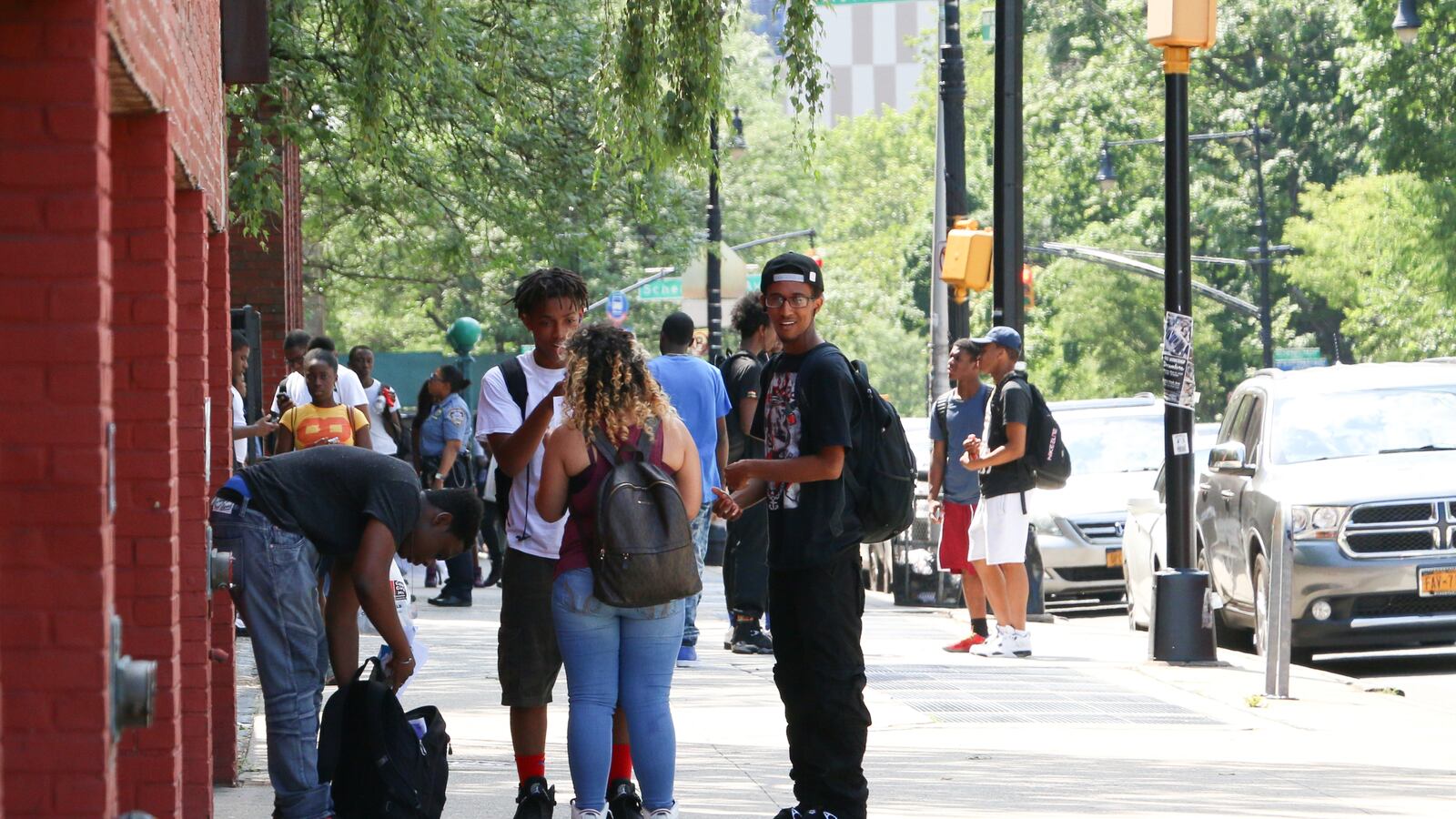While the de Blasio administration stalls on school desegregation, New York City students suffer.
The 1966 Coleman Report — widely considered the most important piece of education research of the 20th century — showed that the success of low-income students is tied to whether they attend school with wealthier kids, whose advantages benefit all. Yet a 2016 study showed that nearly all of New York’s black and Hispanic students attend schools where the majority of students are poor. Other research has shown that this isolation isn’t inevitable: many schools are poorer and more racially segregated than their neighborhoods.
This racialized concentration of school poverty creates a persistent achievement gap, and it must stop. Now.
Brown v. Board called for an end to publicly sanctioned school segregation in 1954, after all. The Coleman Report turned 50 years old this month. And while the issue has been growing in prominence recently, the mayor and Chancellor Carmen Fariña have paid scant attention. (Fariña recently called it “the elephant in the room,” as if no one else had noticed.) As City Councilman Brad Lander concluded, the city Department of Education has provided “nothing approaching systemic action or even a coherent plan.”
Before becoming a professor, I practiced desegregation law. I know that addressing this problem hasn’t always been pretty. But people know how to do this — and they’ve been doing it at least since the Brown decision.
So what should such a plan look like?
New York City needs a dedicated, professional staff of outreach workers, educators, demographers, lawyers, and planners who can assemble data and fan out across the city to engage the public. Parent involvement is key, but so is more general input, since all will benefit from desegregated schools.
They should consider all of the strategies available to address the problem. Some schools are already using “set-asides,” meaning they hold a portion of seats out from general enrollment lotteries so spots are assured for specialized populations like low-income students and those living in shelters. Broader “controlled choice” plans could help distribute high-needs students.
Many districts around the country simply change school attendance zones — even repeatedly — as population shifts dictate. (This is part of what the city is now looking to try on the Upper West Side.) Older children and siblings are often grandfathered in for their own and their parents’ convenience.
And while there are many reasons city officials might not want to try desegregating schools, legal concerns shouldn’t be one.
The Obama administration has released guidance suggesting many permissible routes to integrate schools that have all been vetted to avoid race-based legal entanglements. One option is using permissible proxies for race, like income and residence. But the door also remains open — if only a bit — to consider race and ethnicity outright.
Parents Involved, the last Supreme Court case on K-12 voluntary integration, contains a concurrence by Justice Kennedy that provides for the possibility of districts creating race-based integration plans. Changes in the Court’s makeup over the next several years may further improve the chances of progressive challenges to the status quo.
It would thus not only be foolhardy but wrong to assume that legal impediments will forestall efforts at racial desegregation.
All of this can be done in a way that is sensitive to families’ needs. In New York City, elementary, middle, and high schools need to be considered separately, given their different enrollment systems and transportation considerations. The final look of schools’ integration numbers will vary, too, from neighborhood to neighborhood and across district lines. And considerations of diversity should not be confined to race and income but extend to students’ multitude of ethnicities, languages, and special needs. Desegregation is no longer black and white; set quotas an impossibility.
Squarely facing the political realities of desegregation is a tall order for any administration. Mayor Michael Bloomberg ignored the opportunity, and Mayor de Blasio has thus far squandered it. But putting off the issue is irresponsible and a disservice to the people of New York.
It is time for the mayor to proclaim, “Desegregation now. Desegregation forever.”

